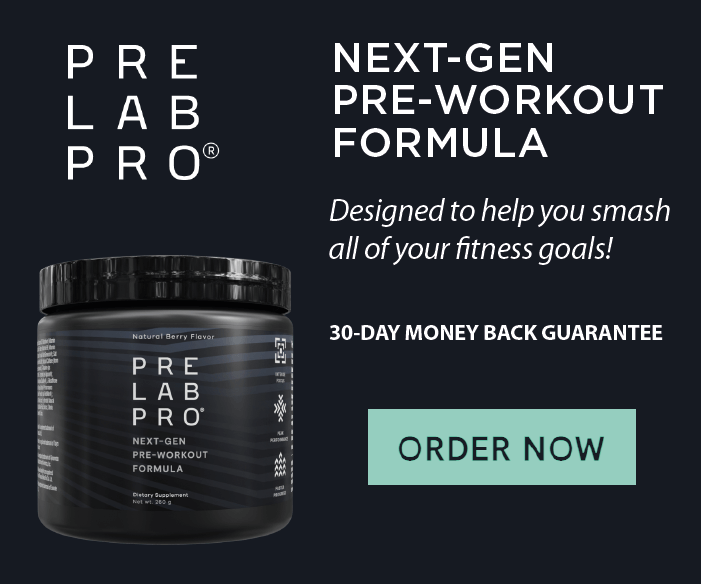How to build a successful workout plan
By Martin Ebner, Head personal trainer at ebylife
A well-thought-out workout plan can make all the difference between great results and mediocre ones. What you choose to do, when and how will directly affect your ability to reach your goals and maintain a consistent exercise routine.
Whether you are new to exercise, returning after an injury or break or are simply looking for a new way in which to progress, this step-by-step guide will help you build a successful workout plan.
Step 1 - Decide how much time you’re able to commit to exercise
It's important to be realistic here. If you'd like to lose 100 pounds but are only willing to commit 1 hour a week to exercise, you're going to fail (miserably). On the flip side, it's important not to go overboard either. In general, the more you do the better but only to a point. If you're new to exercise or returning after injury or an inactive spell, start with 3 to 4 30-minute workouts per week. Once you've proven to yourself that you can stick to it, you can begin to slowly increase the frequency, intensity and length of your workouts.
By easing into your new workout plan, you're far less likely to feel overwhelmed than if you go for too much too soon.
Step 2 – Decide where you would like to train
Where you train is directly related to your time commitment. If you train at home, you'll spend less time commuting and more time exercising (theoretically). If you train outdoors or at the gym, try to choose one close to home or work. The further you have to travel, the bigger the time commitment and also the more reasons you might find not to exercise. Either way, it has to be convenient, motivating and easy. Otherwise, you won't be able to stick to it long-term (and that's the ultimate goal).
Step 3 – Set a realistic Goal(s) and time frame
The keyword here – realistic
I'm sure you already have an idea in mind but before you blurt out an unrealistic goal like breaking the next 100-meter world record (possible but highly unlikely) take a moment and really think about what’s achievable with your new workout plan. Once you have an overall goal, say to lose 10 kilos, it's good to break down those goals into bite-sized chunks. Say 2 kilos a month for 5 months. Once you know exactly what you'd like to achieve you can begin to piece together your workout plan.
Note: Forget all the crap you’ve read about building a booty in a minute a day or a six-pack in six weeks. I’m not trying to dishearten or discourage you to workout, I’m simply trying to help manage your expectations. If it sounds too good to be true, it almost always is!
Step 4 – Choose the type of exercise that is most beneficial to your goals and body type
As I don't know your goals specifically, I can't tell you exactly what activities or exercises to do. What I can tell you is that you should prioritize your workouts and routine based on what you deem the most important and beneficial to your goals.
If you're going to run a marathon, you'll need to prioritize running. If your goal is to gain muscle, you'll want to focus on weight training.
The next step is to then decide which aspects are most important within any given workout.
Let's say your goal is to squat 100 kilos, make sure you hit squats at the start of leg day when you're feeling fresh and at your best. If you're training for a new PB 100 meter sprint, choose exercises that will help build explosive power.
Note: It's very important to consider your body type. Genetics plays a crucial role in what's possible for your body shape and If you're looking at someone else’s body for inspiration, try to make sure it's similar in shape and size to your own. If you look like Amy Schumer but want Victoria Beckham's physique, unfortunately, it's not going to happen! #managingexpectations
Related: 5 Training methods to take your fitness to the next level
Step 5 – Variety
While it's recommended to prioritize the sort of exercise that is most beneficial to your goals, it's also important to keep things varied. If you drag on month after month doing the same thing, your body will likely become used to the exercises and intensity of your workouts and 2 things will happen: 1. You'll get bored and 2. Your results will stagnate.
As a general rule, try to include a variety of different exercises and activities into your weekly routine and mix things up every 6 – 16 weeks depending on your goal.
Step 6 – Stay consistent
This is where it gets tricky. While there are no sure-fire ways to stay consistent. Know this. You'll never reach your goals or get the sort of results you want if you can't learn to be consistent with your exercise routine. While it's ok to miss a workout here and there, if you find that you're using every excuse in the book not to work out or you're doing a month on followed by a month off, there's clearly something wrong with your workout plan. It's either too intensive or doesn't include anything that you enjoy. Either way, make a few tweaks or start again.
Step 7 - Rest
The best workout plan includes regular rest. As enthusiastic as you are to get quick results, never neglect your downtime. It's actually when your muscles recover, strengthen and grow. If you aren't patient or allow this process to happen, you'll a.) get poor results or b.) You'll burn out. Neither of which is good for morale!
Step 8 - Diet
The best results come from a combination of a great exercise and nutrition plan. Don't be foolish and think that you can out-train a poor diet. The common expression, “Abs are built in the kitchen” is very close to the truth.
Not only will good nutrition help change your physique and body composition (ratio: fat to muscle), it will also help better fuel your workouts.
Related: Post-workout nutrition for big results
Summary
Decide on your time frame and commitment, choose your workout location, set realistic goals, choose the sort of activities and exercises that are most beneficial to your goals, mix things up every 6-16 weeks, stay consistent, take rest days and last but not least, get serious about nutrition.
Still not sure
Talk to the professionals! Personal trainers and fitness coaches are there to help and will, at the very least, be able to point you in the right direction.


